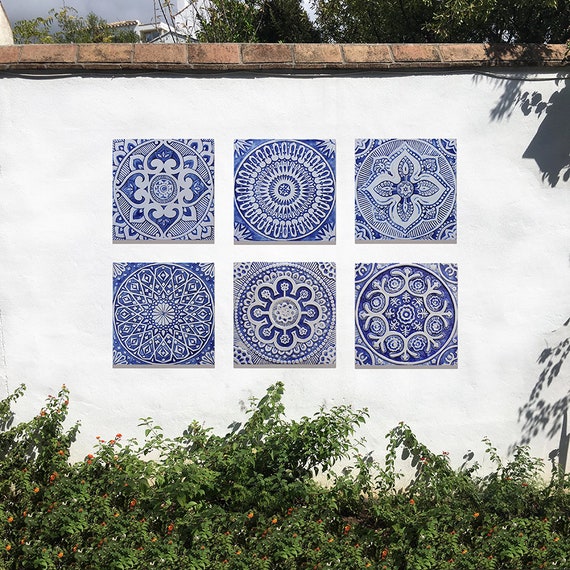Decorative tile wall art is more than just a home improvement trend; it’s a way to add personality and character to your space. From kitchens to bathrooms, to living rooms, decorative tiles can completely change the atmosphere of your home.
What is Decorative Tile Wall Art?
At its core, decorative tile wall art involves using tiles as a medium for artistic expression. These tiles can range from ceramic and porcelain to glass and stone, offering a plethora of designs, styles, and colors to choose from. They can be used to create intricate patterns, captivating murals, or simple yet elegant accents.
Types of Decorative Tile
Ceramic Tiles
Ceramic tiles are versatile and durable, making them a popular choice for decorative wall art. They can be glazed or unglazed, allowing for a variety of finishes.
Porcelain Tiles
Porcelain tiles are denser and less porous than ceramic tiles, and they often have more intricate designs. They are ideal for high-moisture areas like bathrooms.
Glass Tiles
Glass tiles offer a sleek, modern look. They reflect light beautifully and can be used to create stunning mosaics.
Stone Tiles
Natural stone tiles, such as marble or slate, add a touch of elegance to any wall. Each piece is unique, showcasing the natural variations of the stone.

Benefits of Using Decorative Tile Wall Art
1. Aesthetic Appeal
One of the main advantages of using decorative tiles is their ability to enhance the beauty of any space. The variety of colors and patterns allows homeowners to express their unique style.
2. Durability
Tiles are known for their durability. They can withstand wear and tear, making them a long-term investment for your home decor.

3. Easy Maintenance
Decorative tiles are easy to clean and maintain, requiring just a simple wipe down to keep them looking fresh and vibrant.
4. Versatility
Tiles can be used in various spaces, including kitchens, bathrooms, living rooms, and even outdoor areas, making them incredibly versatile.

Installation Tips for Decorative Tile Wall Art
Installing decorative tile wall art can seem daunting, but it can also be a rewarding DIY project. Here are some tips to help you through the process:
1. Plan Your Design
Before you begin, sketch out your design. This will help you visualize how the tiles will fit together and ensure a balanced look.
2. Prepare the Surface
Ensure that the wall surface is clean, dry, and smooth. If necessary, apply a primer to help the adhesive bond better.
3. Use the Right Tools
Gather all necessary tools, including tile adhesive, a trowel, a level, spacers, and a tile cutter for precise measurements.
Inspiration and Creative Ideas for Decorative Tile Wall Art
Kitchen Backsplashes
A decorative tile backsplash can become the focal point of your kitchen. Consider using colorful mosaics or patterned tiles to add character.

Bathroom Accents
Tiles can be used creatively in bathrooms to form stunning shower walls or artistic borders around mirrors.
Feature Walls
Create a feature wall in your living room or bedroom using decorative tiles to make a bold statement.

Pros and Cons of Decorative Tile Wall Art
| Pros | Cons |
|---|---|
| Durable and long-lasting | Can be expensive depending on material |
| Easy to clean and maintain | Installation can be challenging for beginners |
| Variety of styles and colors | Grout can stain over time if not maintained |
| Increases property value | Heavy materials may require additional support |
FAQs About Decorative Tile Wall Art
What materials are best for decorative tile wall art?
The best materials depend on your project’s location. Ceramic and porcelain are excellent for durability, while glass tiles add a modern touch.

Can I install decorative tile wall art myself?
Yes, many homeowners choose to install tiles themselves. It requires some planning, the right tools, and patience.
How do I clean decorative tiles?
Cleaning decorative tiles typically involves wiping them down with a damp cloth and mild detergent. Avoid harsh chemicals that can damage the finish.
Are decorative tiles suitable for outdoor use?
Yes, but make sure to choose tiles rated for exterior use to withstand the elements.